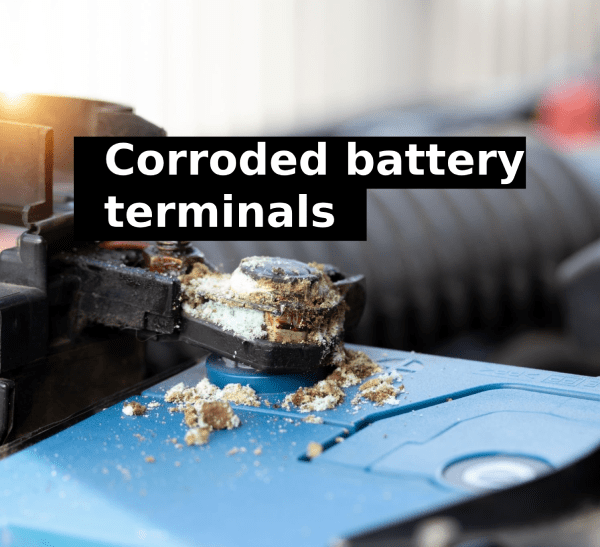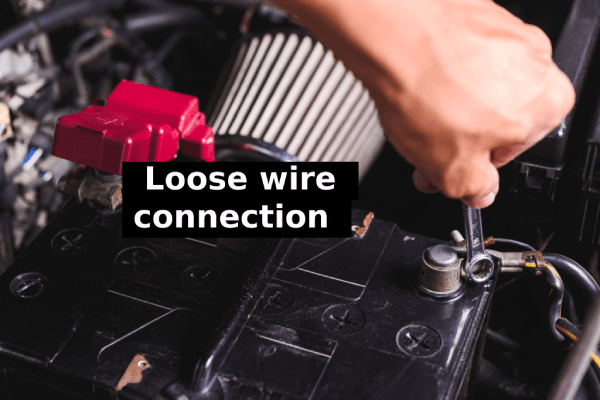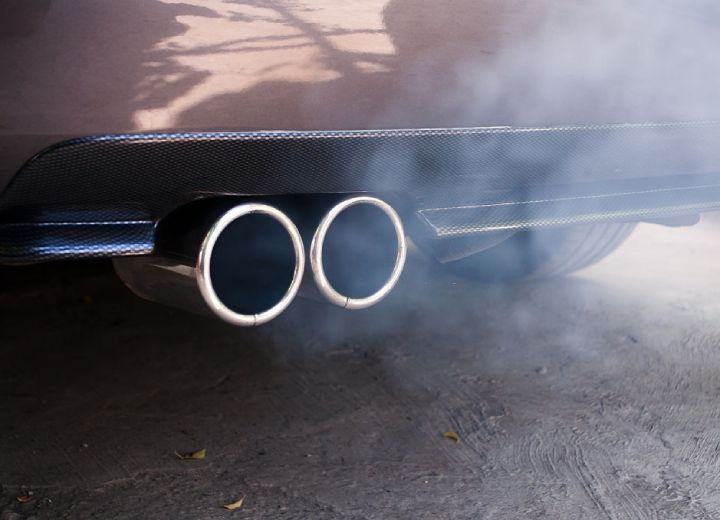Nothing is more annoying than your car acting weird without clearly indicating what is wrong with it. Such a scenario is a slow start, even though the battery seems fine. Identifying the culprit can take several hours of labor, and unfortunately is one of those issues that can cost more to diagnose than the actual repair itself.
However, there are some things that you can do to try and locate the cause yourself. This article will discuss the most common causes and explain how to diagnose each of those. If this situation occurs only when hot outside, read our separate troubleshooting guide.
Here is why your car might be starting harder than usual, even though the battery is fine:
- Failing alternator
- Corroded terminals
- Loose connections
- Loose ground strap
- Falling starter relay
- Worn starter brushes
- Parasitic drain
01. Failing alternator
In an automobile, there is both mechanical and electrical energy. Two components provide these sources of power: the engine and the battery. Mechanical energy generated by the engine is what helps the wheels to move.

The battery, on the other hand, provides electrical power to the electrical components of a vehicle, such as headlights and radios. The role of an alternator is to convert mechanical energy to electrical energy, keeping the battery charged. A faulty alternator will disrupt the electrical designs of an automobile. When an alternator is defective, its ability to charge the battery is compromised, causing the Battery Saver Active Mean message to appear on newer vehicles.
Symptoms
- Difficulty starting the car; since the alternator can no longer charge the battery, the vehicle uses up all the battery’s power leaving it drained. Buying a new battery with a faulty alternator will leave you stranded since it can only last for a short while.
- Electrical issues; headlights becoming dim, automatic windows slow to operate, etc
- Strange noises
- Engine stalling
- Battery Discharge Warning message
How to diagnose a faulty alternator
To test for a faulty alternator:
- Ensure your battery is in good condition.
- Get a multimeter.
- Set it to DC volts above 15 to 20 volts.
- Connect the black cord of the multimeter to the negative terminal of your battery and the red cable to the positive terminal.
You’re aiming at 12. 6 volts; within that range, it could be slightly lower or higher. Start your vehicle; the readings should pop up between 14.2 and 14.7 volts. If this happens, your alternator is in good condition and properly charging the battery. If it’s much higher, it’s overcharging the battery, and undercharging takes place if it’s much lower.
When you turn the load on, such as headlights, radio, and fan, in this instance, the alternator will not be enough to charge the battery. The reading on the multimeter should not go below 12.7 volts when the load is also on. Recall what your initial reading before turning your car on is. The reading on the multimeter must be higher than after shutting the vehicle. If this happens, what you have is an alternator working just fine.
Repair cost
Well, it depends on the electrical issues brought on by the alternator. Minor repairs may cost $50 or even less, while major repairs can cost thousands. Replacing a damaged alternator can cost thousands of dollars.
02. Corroded battery terminals

Corroded terminals occur as a result of leakage from the battery. It is terrible for your automobile, giving rise to electrical issues. Why does battery terminal corrosion happen?
- An alternator overcharging or undercharging the battery for an extended period can lead to hydrogen gas leakage. If the corrosion is on the negative terminal, that’s undercharging, while the positive terminal results from overcharging.
- Due to the battery’s life span or defect, electrolyte leakage could occur and build up on the terminals.
- Overfilling the battery with water is probably another cause of electrolyte leakage. Once the water comes in contact with the terminals, corrosion occurs.
- A chemical reaction in the copper clamps; copper is a good conductor of electricity and corrosion resistant; that’s why it is widely used. However, when an electric current passes through its terminals, copper sulfate is produced, which is not a good conductor of electricity. When a bluish precipitate is noticed on the copper terminals, that is a sign of copper sulfate.
Symptoms
Mostly it gives rise to electrical issues. The headlights become dim, and the car turns on sluggishly rather than immediately or does not even start, or radios fail to switch. Corrosion on battery terminals hinders the flow of electric power to the other parts of the vehicle. Blue or white power deposits on battery terminals also show corrosion.
How to diagnose corroded terminals
When you realize your car is not starting immediately like any other typical day or when you switch on your headlights, they are dim or flickering; this is probably a result of terminal corrosion on the battery. When you open the car hood and on the battery terminal, you find white or blue precipitate; this signifies heavy corrosion. Suppose this precipitation is accumulated on your negative terminal because the battery has been undercharged for too long. When it is on the positive terminal, it’s been overcharging for too long.
If the corrosion is minimal, it can be cleaned up. Ensure you have your hand and eye protection on. But if it is heavily corroded, the battery has to be replaced.
Repair cost
Replacing your battery terminals would cost about $20 to $50, but it could cost more depending on your mechanic.
Related content: Car Starter Drawing Too Much Power? Here’s Why
03. Loose connection

Loose battery cables can affect how electrical energy is transferred to other parts of your vehicle. Symptoms
- Complete failure of the car to start but the engine cranks
- Dim headlights
- The battery’s cable surface builds up resistance; if the negative battery cable has a loose connection, overheating is likely to occur
- Low voltage on cars battery
How to diagnose loose connections
Locate your battery, examine the terminals and check out the cables. Ensure the negative and positive wires are connected to their respective terminals. If you notice any loose connections or if they are disconnected, first connect the positive cable and then the negative. During connections, avoid hitting the battery cylinder; otherwise, active substances, such as electrolytes, hydrogen, etc., might leak and damage the battery.
Repair cost
Loose battery connections cost less than $20 to fix.
Related content: Why Don’t You Connect The Negative When Jumping A Car?
04. Loose ground strap
Ground straps are like straps of ribbon braided steel that run through the engine to the negative component or chassis of the car. A ground strap ensures that your battery will perform from time to time and at a consistent voltage.
Symptoms
One of the symptoms of a faulty ground strap is a dead battery. A bad ground strap might not necessarily damage the battery, but it can stop it from charging. Since the ground strap is faulty, the alternator may not properly charge the battery.
Another symptom to look forward to is your vehicle’s headlight. Either they do not turn on, or if they turn on, they are either dim or flicker.
The illuminated battery light on the dashboard is another symptom of a bad ground strap. Illuminated battery light means the battery is charging but not adequately.
Low battery voltage. If the voltage after connecting your multimeter reads less than 12.3 volts, this probably indicates a faulty strap because your battery is not charging effectively.
How to diagnose a faulty ground strap
This is how you test a faulty ground strap. It’s an easy process. Start your car, and crank it as many times as possible to let the engine run. Touch the ground strap if any heat is generated at the battery’s negative terminal. Be careful while touching so as not to get burns since it can be very hot. If it creates heat to the point where it starts to melt things, then you have a faulty ground strap.
Repair cost
Ground straps are not expensive. They are affordable and accessible. The replacement cost is between $10 to $ 80. This is dependent on the model of the car and labor costs. The labor cost is about $10 to $30.
Related content: Battery Light Comes on When Idle – Causes & Fixes
05. Failing starter relay
A faulty starter relay can make your vehicle produce clicking sounds when you turn on your car. A faulty starter relay doesn’t pose an issue in most cases. It’s a rare phenomenon, but when it happens, no matter how hard you try to start your car, it just won’t start.
Symptoms
- Your car won’t start
- The starter motor would be on even after the engine had started
- Multiple clicks from the starter
How to diagnose faulty starter relay
Before testing the starter relay, ensure your battery is in good condition and at 12 volts. Start the car, then listen to the sound the starter relay produces. If it’s a weak sound, the starter will be tested for electrical resistance, but if it produces a rather strong click, test for power voltage.
You will need a multimeter for the test.
For electrical resistance,
Place the red card of your multimeter on the ignition circuit terminal and the other black on the ground terminal. Switch on the ignition key. If the reading on the multimeter is not 12 volts, your starter relay is faulty.
To test for voltage drop,
Set the multimeter to 29 volts DC. Put the positive cord of your multimeter on the terminal connection of the positive wire from the battery. Place the other cord on the connection to the ignition switch circuit. Turn on the ignition key. If the voltage drop is anything more than 0.2V, there’s an issue with the electrical conductivity that leads to the starter.
Repair cost
Depending on the vehicle, a starter relay costs about $15 to $100. This will help get it fixed if you’re going to a mechanic. The starter relay isn’t expensive; you can get it as cheap as $5. It costs about $5 to $50.
06. Worn starter brushes
Worn-out starters or carbon brushes create a strange squeaking but not cranking sound. It is caused as a result of irregular contact of the brushes.
Symptoms
- Engine refusing to turn over or start
- Squeaking noises when starting the motor
- The starter is working but not spinning the motor
- Dim lights in the vehicle when starting the car
How to diagnose worn-out starter brushes
Observe the brushes until they are reduced to around a quarter of an inch. Replace them once they get that small. It should be replaced if you also observe any leakage or damage. A change in the spring’s color indicates that broken lead is in the spring. The spring is bound to exhibit several colors when this happens.
Repair cost
The replacement cost of starter brushes is about $25 to $50.
07. Parasitic drain
Parasitic drain on the battery happens when the vehicle’s electrical structures continue to sap energy from the battery even when the car is parked. Not just parked, but completely off. Nothing is turned on in the vehicle, but the battery is continuously drained of its energy. This becomes an issue if the energy is drained below average and can affect the battery’s operation.
How to diagnose parasitic drain
Get your multimeter ready. Turn off your vehicle and remove the ignition key. Remove the black battery cable from your battery terminal. Connect the multimeter cords to the battery cable. Ensure the multimeter is on DC Amps and it is in the highest amp. After connecting the multimeter, if no reading comes up, reduce the amp level until a reading appears. If the reading is above 50 to 80mA, your vehicle is experiencing an electrical issue.
Repair cost
As a result of the parasitic drain on your battery, the battery can be rendered dead. If this happens, a replacement is needed. And this cost about $70 to $ 700. It’s best to diagnose the problem early before it drains the battery completely.
Closing Thoughts
If you have made it to the end of this article, you should now have a pretty good idea of where your problem comes from. It can be one or more of the problems discussed above; hence I recommend testing each one of them to ensure they are all in good working condition.
If you do not have the right tools or time, you should be prepared to spend a couple of hundred dollars for a mechanic to diagnose and fix the problem.
Every since I was a little boy, I can remember spending the afternoons in my dad’s repair shop. I got my first car at 16 and it was the best feeling ever!
I have contributed to various automotive publications but decided it’s finally time to settle for something constant.








